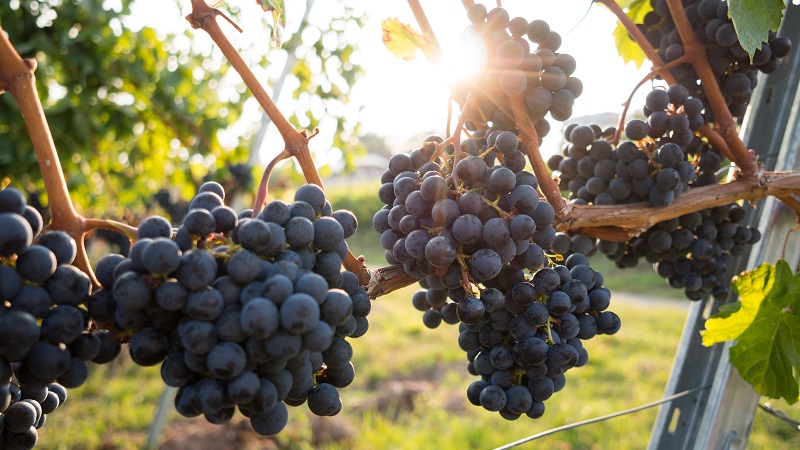Trial Seeks To Improve Ohio Winegrape Options
In an effort to boost Ohio’s wine industry, researchers with Ohio State University (OSU) Extension and the Ohio Agricultural Research and Development Center (OARDC) are determining what new winegrape varieties can survive and thrive in Ohio’s climate.
Since 2008, the team has studied more than 40 winegrape varieties, especially high-quality, high-value European types. Most are relatively new to Ohio, such as Arneis, Carmenere, Gamay noir, Gruner Veltliner, Pinotage, Regent, Sangiovese, and Teroldego, said Imed Dami, a state viticulture specialist with OSU Extension.
The questions researchers are looking to answer include how the grapes will perform in Ohio vineyards and cellars; if they can survive and thrive through Ohio’s harsh winters; and is planting them worth it for Ohio wine grape growers, Dami said.
Although it is still too early in the trials to make any definitive recommendations on which varieties perform best and in which location, researchers are seeing some promising indications, said Dami, who also has an appointment with OARDC.
“Some varieties are promising, however, we are still in the process of evaluation,” he said. “It typically takes eight to 10 years for a variety evaluation trial to come to fruition for conclusive results, considering it takes four years for the grape vines to establish and mature.
“We then collect data on growth, yields, cold hardiness, and fruit quality of the grapes and make wine from them. Last year, we had the first crop and made wine from some of the varieties, and we observed some encouraging results from some varieties.”
Researchers conduct the grape and wine trials in the research vineyards at OARDC’s Wooster campus, the OSU South Centers in Piketon, and OARDC’s Ashtabula Agricultural Research Station (AARS) in northeast Ohio near Lake Erie.
One of the goals of the trial is to increase the diversity of Ohio winegrapes to provide increased choices for Ohio wineries to create more diverse and unique wine products to meet growing consumer interest, Dami said.
“We have several varieties in Ohio that are doing well, but consumers are always looking for something new and different,” he said. “And wine producers in Ohio, in response to consumer demand, want to offer more varieties, especially more red wine varieties.”
During the last 10 years, Ohio’s wine industry has grown significantly, said David T. Daniels, director of the Ohio Department of Agriculture. In fact, the number of Ohio wineries has nearly doubled since 1997.
According to a 2008 Economic Impact report, Ohio’s grape and wine industry generates more than $580 million in economic activity that supports local communities while producing a superior agricultural product. The Ohio grape and wine industry also employs more than 4,100 people, providing a payroll of $124.2 million, he said.
“Ohio’s wine industry is now the fourth-largest in the eastern U.S. and is known nationally and internationally for excellence,” Daniels said in a statement. “The grape and wine industry is deeply tied into the state’s agriculture industry and plays a significant role in our history and our current economic success.”
That success has contributed to the significant growth of Ohio wineries, said Gary Gao, an Extension specialist and associate professor of small fruit crops at the OSU South Centers in Piketon. That’s also led to a shortage of Ohio-grown winegrapes, because there aren’t enough producers to meet the growing demand, he said.
“One of the reasons is that we used to have about 70 wineries several years ago,” Gao said. “We’ve since had a tremendous increase in the numbers of wineries, and all those new wineries need grape juice as a starting product for wine.
“But it’s quite challenging to grow winegrapes, especially vinifera grapes, in Ohio, because they aren’t as cold-hardy but produce high-quality wines. That’s part of what we are trying to research to improve.”
Other Ohio State researchers working in the program include Todd Steiner, an enology (wine-making) specialist; Dave Scurlock, a viticulture outreach specialist; Greg Johns, manager at OARDC-AARS; and specialists Mike Ellis (grape diseases), Doug Doohan (weeds) and Roger N. Williams (insects).










